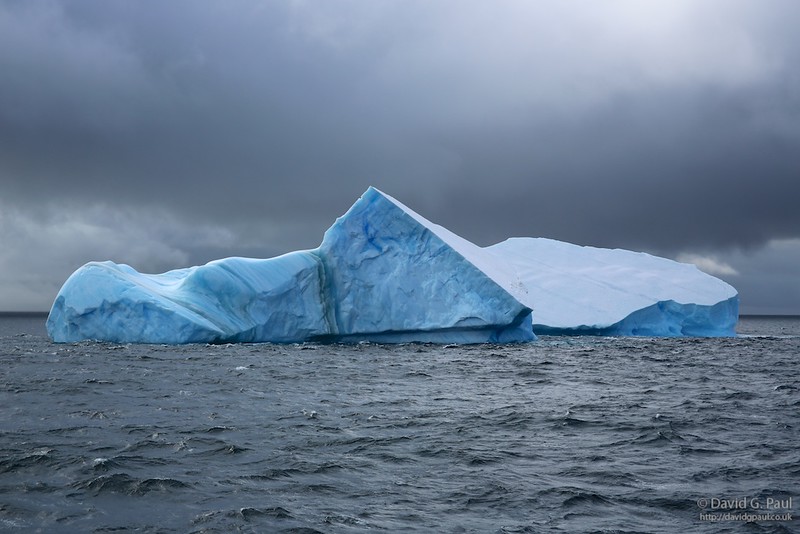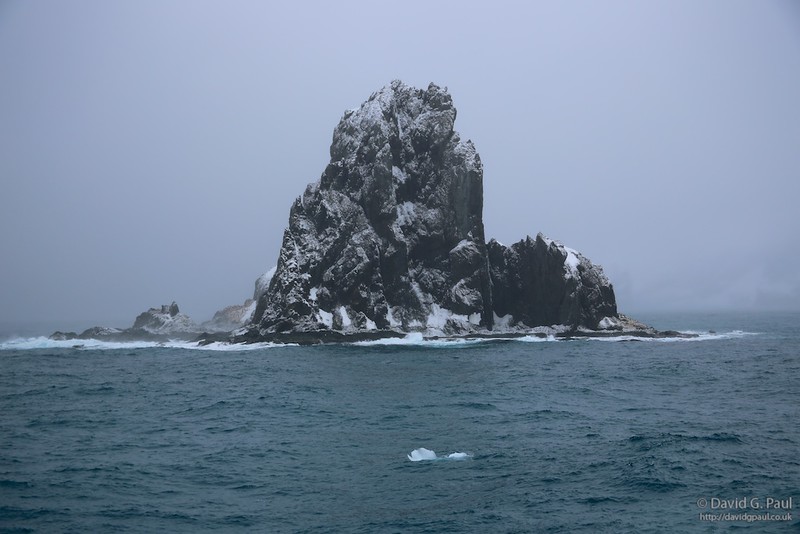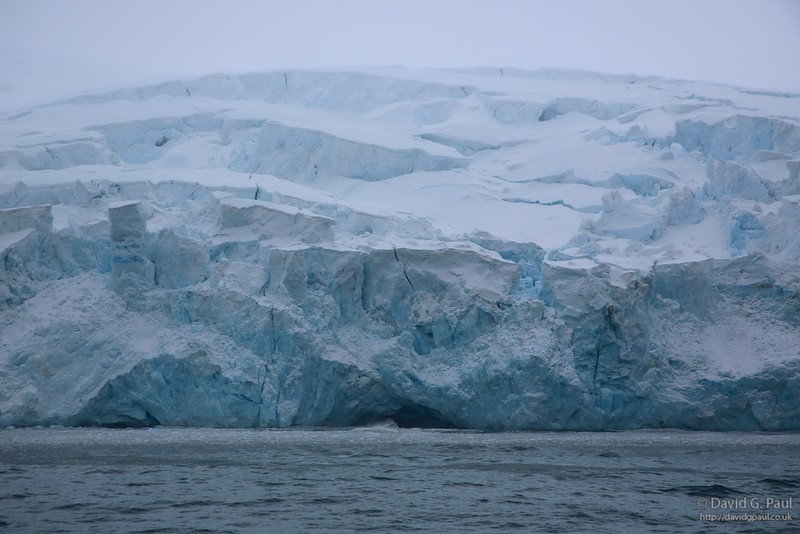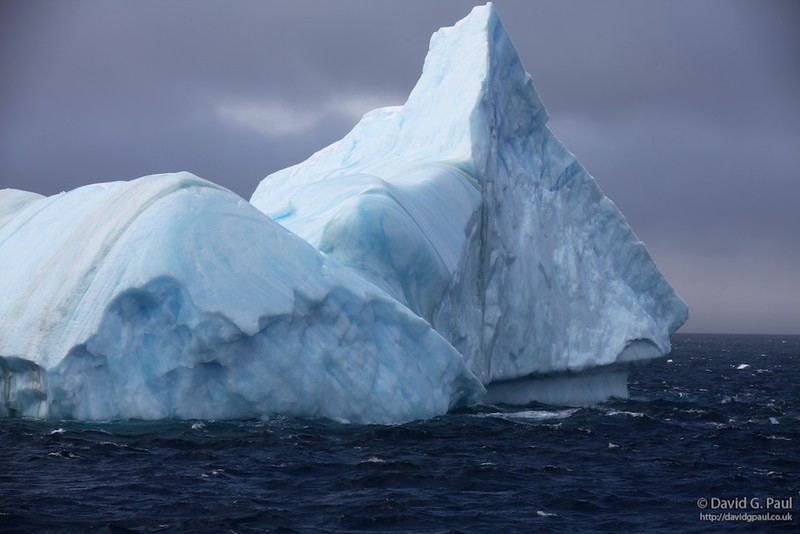Early in the morning we arrived at Elephant Island, the first of the the South Shetland Islands we’d encountered. We got a wake-up call at 06:00 to let us know we’d arrived and would be stopped for about an hour. This gave us time to go out on deck and photograph Point Wild, a barren and intimidating piece of land that Shackleton encountered during his Endurance expedition.
After a group photo we then had a bit of time before breakfast and moving on to Cape Lookout to hopefully land. This is a very remote and rarely visited location, so not many people have stepped foot on this island, so it was quite pleasing that we expected to get a chance to. On the way though we encountered a pod of at least five fin whales, one of whom we believed to have been a juvenile, which delayed people going for breakfast but didn’t shouldn’t have affected us going ashore.
The Fin Whale is the second largest animal on the planet. On one side it looks whiter in colour than the other, and when diving it will sometimes roll to reveal it’s foreflippers.
A while after breakfast we went around the tip of Cape Valentine, and gradually edged closer to the island. As we did so we passed a very large iceberg, the largest we’d seen this close and one I noticed whilst on the ship’s bridge. This one had many chinstrap penguins sitting on it close to the edge. As we passed we could see that it was an iceberg that had at some point turned on it’s side – this was evident by the large flat surface that could be seen at an angle on one side.
Again we had another whale encounter whilst en-route, this time a humpback whale – not visible for long enough to photograph though. When we got to Cape Lookout the conditions were not suitable for the landing we’d anticipated so we moved on hoping we could land on Gibbs Island instead. It was unfortunate, but on expeditions you can’t expect everything to go as planned – you have to be flexible to the conditions you encounter.
 By about 12:00 we had reached the island and had begun navigating around it to find a suitable landing point. Again the conditions were not good enough to land so we continued passed it and onwards towards the Antarctic Peninsula.
By about 12:00 we had reached the island and had begun navigating around it to find a suitable landing point. Again the conditions were not good enough to land so we continued passed it and onwards towards the Antarctic Peninsula.
The afternoon went by slowly, but eventually there was a lecture to go to – one on the coastal birds of Antarctica. Though it was introduced as us having already seen 90% of the species covered in this. This ended with a video on the migratory behaviour of the Arctic Tern, a bird which travels between the Arctic and Antarctic every year as the seasons change.
For the evening briefing they discussed Orca Whales due to the previous evening’s sighting. This then moved on to a bit about the politics of Antarctica, and who actually has claims to which bits. Under the 1961 Antarctic Treaty it meant that these claims have no actual meaning – in the interest of science it is owned by none. At this time the plans for the next day were unknown – the data they had for the ice shelf was 3 days old, but looked promising.
Before any decision could be made the Captain and the Expedition Leader needed to see what it was like there – which wouldn’t be known until the morning. This meant they wanted to leave all options open until then; for now we’d continue down the Bransfield Strait.
The evening story was from the glacier expert and was about her time on a German research base on Antarctica and how psychologically taxing it was. It sounded like it was a really rough time, and from what she said, staying in Antarctica for extended periods of time over winter can cause people to act crazy. In this context it makes it even more amazing that Shackleton achieved what he did.




